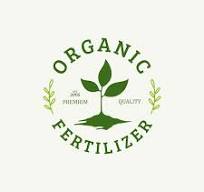What Are Urea Fertilizers? A Comprehensive Guide to Their Use and Impact on Agriculture
Organic Fertilizer .Urea fertilizers are some of the most commonly used agricultural inputs worldwide. Known for being a highly economical source of nitrogen, urea plays a crucial role in improving soil fertility and boosting crop yields. Whether applied to large-scale commercial farms or smallholder agricultural systems, urea’s impact is significant. In this article, we’ll explore what urea fertilizers are, their chemical properties, reactions in soil, mobility, and best practices for their application.
Understanding Urea Fertilizers
Urea, with the chemical formula CO(NH2)2, is a simple organic compound that is naturally excreted in the urine of mammals. It is one of the richest nitrogen sources available to plants, containing 46% nitrogen (N) in its solid form. Commercial urea fertilizers are typically produced by reacting ammonia (NH3) with carbon dioxide (CO2) under high pressure, a process that yields solid urea prills or granules.
Urea is often available in two forms:
- Prills: Small, rounded pellets that are more prone to volatilization and leaching.
- Granules: Larger, more dense particles that are less likely to lose nitrogen due to their physical properties.
While both prilled and granular urea fertilizers have the same nitrogen content, granular urea tends to be 15-20% more efficient than prilled urea in preventing nitrogen losses. This is because granular urea is less likely to volatilize, especially in high temperatures and pH conditions.
Urea fertilizers are highly soluble, with a solubility of 1079 g/L at 20ºC. This high solubility allows urea to be applied not only to the soil but also through fertigation (application via irrigation systems) or foliar sprays. However, urea should not be used in soilless culture systems, as it tends to leach out rapidly without proper soil retention.
Urea in the Soil: Reactions and Nitrogen Conversion
Although urea provides a significant source of nitrogen, plants cannot directly absorb urea nitrogen. Before plants can utilize this nitrogen, urea must undergo a series of reactions in the soil to be converted into forms that plants can uptake: ammonium (NH4+) and nitrate (NO3‑).
Here’s a simplified overview of the reactions that occur when urea is applied to soil:
- Hydrolysis of Urea: When urea is applied to the soil, it reacts with water and the enzyme urease, which is abundant in the soil. This reaction produces ammonium carbonate (NH4)2CO3.( Organic Fertilizer )The hydrolysis reaction is as follows:(NH2)2CO+2H2O→(NH4)2CO3(NH2)2CO + 2H2O → (NH4)2CO3
- Ammonium Conversion: Ammonium carbonate can then be converted into either ammonium ions (NH4+) or ammonia gas (NH3), depending on environmental conditions like soil pH, moisture, and temperature.( Organic Fertilizer )
- If the pH of the soil is high (alkaline), more nitrogen is converted into ammonia gas, which can volatilize into the atmosphere, leading to nitrogen losses.
- If the conditions are more acidic or neutral, ammonium ions are more likely to form, which are readily available to plants.
- Nitrification: The ammonium ions formed from urea hydrolysis can be further converted into nitrate (NO3‑) by nitrifying bacteria in the soil. Nitrate is a form of nitrogen that plants can easily absorb.2NH4++4O2→2NO3‑+4H++2H2O2NH4+ + 4O2 → 2NO3‑ + 4H+ + 2H2O
These reactions highlight the critical role that soil conditions, including pH and moisture, play in the effectiveness of urea fertilizer.
The Mobility of Urea in Soil ( Organic Fertilizer )
Urea has the unique property of being highly mobile in soil due to its neutral charge. Unlike ammonium, which is positively charged and binds to negatively charged soil particles, urea moves easily through the soil profile. However, this mobility presents both advantages and challenges:
- Leaching: Since urea is highly mobile, it is more prone to leaching, especially in sandy soils with low cation exchange capacity (CEC) or when rainfall or irrigation occurs before the urea has fully hydrolyzed into ammonium.
- Volatilization: If the urea is not incorporated into the soil quickly enough, especially under conditions of high temperature or pH, ammonia volatilization can occur, leading to significant nitrogen loss.( Organic Fertilizer )
Once urea is converted to ammonium, it becomes less mobile and stays in the soil longer, allowing plants to utilize the nitrogen more effectively.
Best Practices for Applying Urea Fertilizers( Organic Fertilizer )
To maximize the benefits of urea fertilizer and minimize nitrogen losses, farmers should follow these best practices for application:
- Incorporate Urea into the Soil: Urea should be incorporated into the soil shortly after application through irrigation or rainfall. This minimizes nitrogen losses due to volatilization and ensures the fertilizer is available for plant uptake.
- Optimal Temperature: Apply urea when soil temperatures are between 15–20°C (59–68°F). Urea hydrolysis is most efficient within this temperature range. Avoid application during extreme heat or cold, as high temperatures can increase volatilization, and low temperatures can slow down urea conversion.( Organic Fertilizer )
- Use of Urease Inhibitors: To further reduce nitrogen losses through volatilization, urease inhibitors can be applied along with urea. These inhibitors slow down the hydrolysis process, giving farmers more time to incorporate the fertilizer before nitrogen is lost to the atmosphere.
- Avoid Applying Close to Germinating Seeds: Urea fertilizers should not be placed too close to germinating seeds or young seedlings, as high concentrations of nitrogen can cause toxic effects, particularly if biuret (a byproduct of the manufacturing process) is present in high levels.
- Soil pH Management: Since high pH promotes ammonia volatilization, it’s essential to monitor soil pH regularly and apply acidifying fertilizers when necessary to maintain optimal conditions for urea efficiency.
- Foliar Applications: Urea can be applied as a foliar spray, particularly for crops that benefit from quick nitrogen uptake. However, care should be taken to use low-biuret urea fertilizers for sensitive crops, as high biuret content can damage plant tissues.
The Environmental Impact of Urea Fertilizers
While urea is an effective fertilizer, improper use can lead to significant environmental concerns, particularly nitrogen pollution. Volatilization and leaching of nitrogen can contribute to air and water pollution, resulting in environmental damage such as eutrophication in water bodies and greenhouse gas emissions.
To mitigate these impacts, it’s crucial to adopt sustainable farming practices that include:
- Regular soil testing to determine optimal nitrogen requirements.
- Use of slow-release nitrogen fertilizers.
- Precision agriculture techniques to apply urea more efficiently.Organic Fertilizer
Conclusion
Urea fertilizers ( Organic Fertilizer )are an essential tool for modern agriculture, providing a reliable and cost-effective source of nitrogen. However, to maximize their benefits and minimize nitrogen losses, it’s important to apply them correctly and manage soil conditions effectively. By incorporating best practices such as soil incorporation, temperature control, and the use of urease inhibitors, farmers can enhance crop productivity and contribute to more sustainable farming practices. Organic Fertilizer
By understanding the science behind urea fertilizers and their reactions in soil, farmers can make more informed decisions that optimize crop yields, reduce environmental impacts, and improve overall farm profitability.

